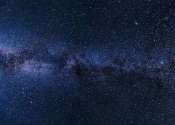First evidence of gigantic remains from star explosions
Astrophysicists have found the first ever evidence of gigantic remains being formed from repeated explosions on the surface of a dead star in the Andromeda Galaxy, 2.5 million light years from Earth. The remains or "super-remnant" ...









